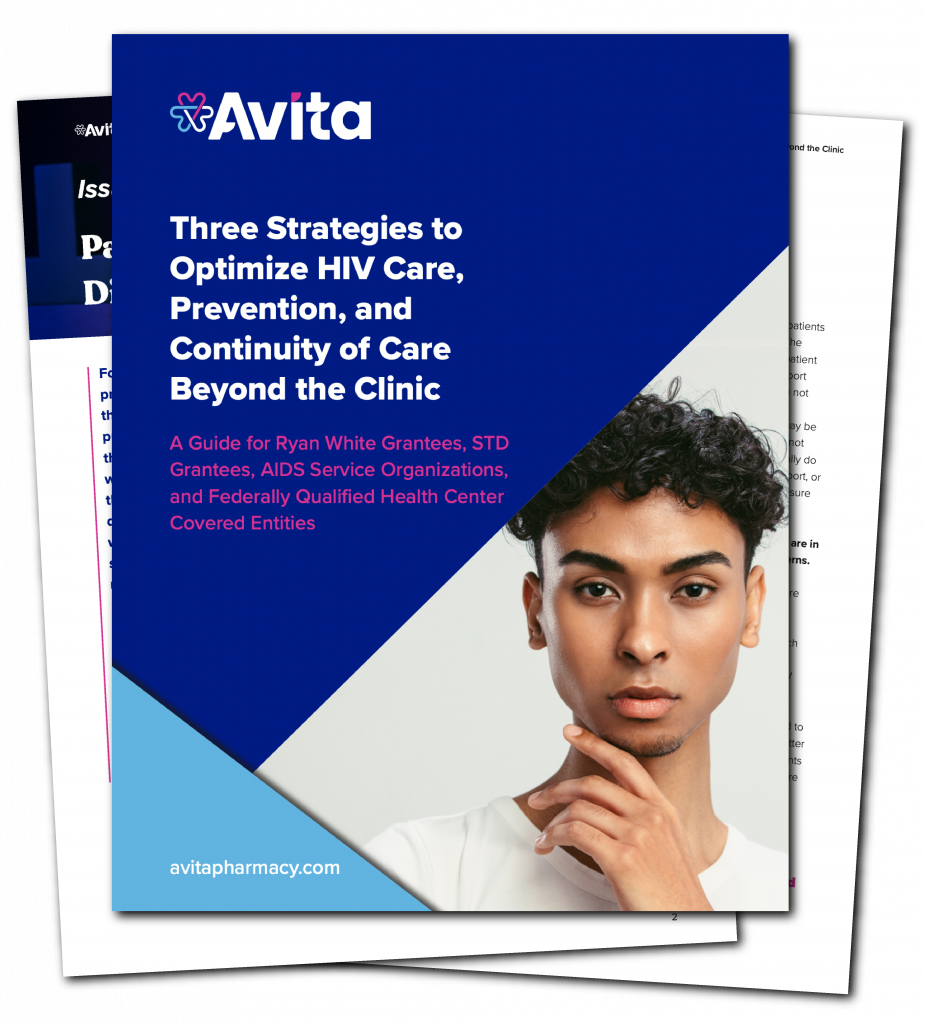SPONSORED CONTENT by Tyler Curry-McGrath, Avita Pharmacy
A patient newly diagnosed with HIV can often feel as if the cards are stacked against them before they even begin. Overcoming the fear and stigma of telling loved ones, finding the right doctor, navigating the insurance process, starting and staying in care—the journey ahead can seem like an impossible one. Even the smallest obstacles along the way can lead to non-adherence to treatment, dropping out of care, and worse health outcomes.
Hearing the words from my doctor’s mouth, you have HIV, was gut wrenching. Waiting for my first doctor’s appointment after my diagnosis, I honestly can’t remember what I was thinking. All I can remember is the fear.
My doctor was wonderful, patiently answering my frantic questions one after the other. Slowly my breathing normalized, my mind stopped racing, and I was ready to start my treatment. I left with a prescription and a co-pay card in hand and went straight to the closest pharmacy in my neighborhood.
Still in the process of internalizing my new reality, I handed over my prescription to the technician. He said it would be $100 for a 30-day fill and that if I wanted to utilize the co-pay program, I would have to enroll myself. For the next 15 minutes I nervously paced the aisles on the phone with a customer service agent. After stumbling through the process, I returned to the pharmacy counter, filled my script, and left with a small sense of relief.
The next 30 days were a blur, and before I knew it, it was time to refill my medication. I returned to the pharmacy, ready to adapt to my new treatment routine. But when the pharmacy tech was processing my script, my health journey took a sudden twist.
“Sorry, but you can’t fill your script here,” the pharmacy tech said.
“What do you mean I can’t fill it here? I got my prescription from here last month,” I said.
“That was a one-time fill that you get. Now we can’t fill it. You’ll have to call your insurance company,” he said.
I’m sure everyone, at some point, has encountered some similar issue at their pharmacy. Insurance is complicated. Bumps in the road come along that we don’t understand but have to somehow figure out on our own, and we’re usually not really surprised when it happens. We expect it.
But should we? For the HIV patient, a bump in the road is more than an inconvenience. It can be life-altering.
Many pharmacies claim to train their staff to process HIV prescriptions. They may provide training on how to apply a co-pay card or search for financial assistance for patients who qualify, but does the pharmacist or pharmacy tech truly understand what that patient is going through? Do they understand the importance of taking the extra time to counsel a patient through an insurance complication? To read the confusion and fear in the patient’s expression and know where that fear comes from? Do they understand the detrimental effect it can have on a patient when they don’t?
For patients experiencing shame, fear, or stigma, an experience like the one I found myself in can be so overwhelming that it leads to debilitating stress and anxiety, and many patients blow off their treatment altogether as a result.
My doctor had emphasized the importance of adhering to my medication and the thought of missing even a few doses was too much to bear. Out of sheer desperation, I called the pharmacy a few hours later. Thankfully, I connected with a pharmacy tech who was familiar with HIV patients and who could sense the fear in my voice. He offered to issue a three-day emergency fill until my script arrived in the mail. This simple extension of compassion for my situation made all the difference in those first few months of treatment. It may have been another day in the pharmacy for him, but it made me feel like I had support in this unexpected journey, and I was no longer going it alone. Within the first 60 days, I was able to achieve an undetectable viral load, a status I have maintained ever since.
My story is not why I advocate for clinics across the country to utilize HIV specialized pharmacies, because ultimately my treatment regimen wasn’t disrupted. However, there are so many patients who fall through the cracks, not because the pharmacy is incompetent at pharmacy care, but because they often can’t understand the very specific journey that those newly diagnosed with HIV are experiencing. It is so easy for a seemingly simple mistake by an unaware or uninformed pharmacist or pharmacy tech to trigger a ripple effect that can lead to a breakdown in patient health care outcomes. Patients often have far too many things to be concerned with to advocate for themselves. That is where clinics, providers, and a specialty trained pharmacy team can play a crucial role.
The journey to living well with HIV does not begin when a patient leaves the clinic. It begins when they leave the pharmacy feeling empowered and in control of their own care. Don’t let your patients’ pharmacy choice become a barrier to their healthcare journey.
As a clinic or provider, you can help make sure your patients get the best possible pharmacy care. One small act of compassion based on expertise and experience working with patients who are living with HIV can make all the difference.
I work for Avita because I am passionate about helping connect vulnerable patients with care that follows them throughout their entire health care journey. In our work with patients seeking HIV care or prevention, we have expertise not just in HIV clinical care, but with the soft skills in understanding the HIV patient journey that can make the difference for those who feel lost in traditional pharmacy settings.
If you’re interested in learning more, please consider providing us a little information about yourself and your role in HIV care and/or prevention so that we can send you this resource we put together:
I am so thankful I was lucky enough to stumble upon compassion when I needed it most. You can help your patients get the compassionate care they deserve too.


Please reach out to me directly at Tyler.Curry@avitapharmacy.com. I am happy to answer any questions via email or even set up a quick call or video chat.



